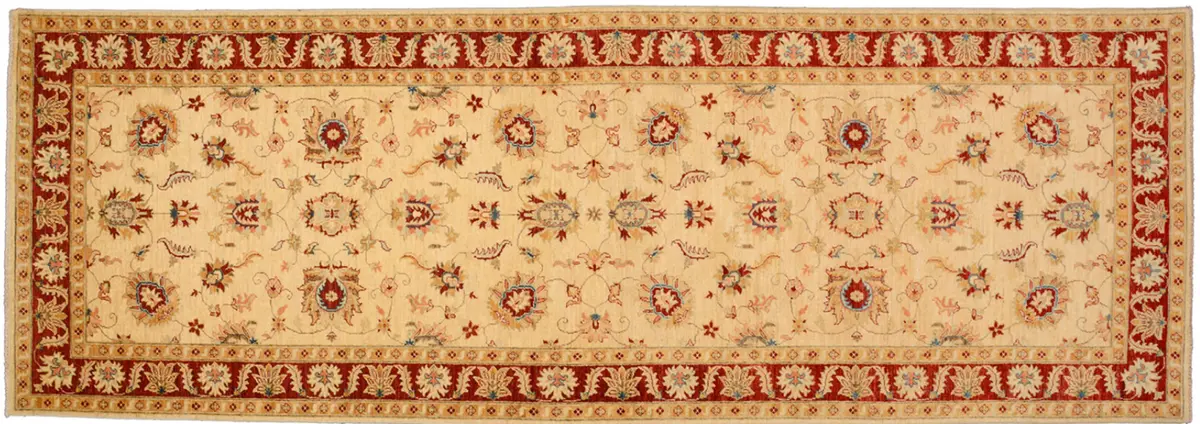Oriental carpets
Oriental Carpet Cleaners, Oriental Carpet Cleaners, Oriental Wool Carpet Cleaners, Oriental Rug Cleaners, Silk Oriental Carpet Cleaners provides services to clients in the areas of refurbishment, repair, deep cleaning, revitalization, antibacterial and disinfectant protection, impregnation of natural carpets according to your wishes in top quality according to our internal company standards, IICRC™ guidelines and standards and expertly implemented PERSIAN® system.

 the PERSIAN® trademark defines the Carpet Service® branded technology concept of expertly executed carpet service companies focused on the regular maintenance, cleaning, revitalization and impregnation of synthetic, natural, wool, oriental and silk carpets, textile and leather sofas, chairs and upholstered materials. This branded concept brings the utmost professionalism in full synergy with maintaining ethical, environmental and quality performance standards including contractual guarantee of the services provided by the contractor.
the PERSIAN® trademark defines the Carpet Service® branded technology concept of expertly executed carpet service companies focused on the regular maintenance, cleaning, revitalization and impregnation of synthetic, natural, wool, oriental and silk carpets, textile and leather sofas, chairs and upholstered materials. This branded concept brings the utmost professionalism in full synergy with maintaining ethical, environmental and quality performance standards including contractual guarantee of the services provided by the contractor.
Oriental carpets fall into the category of more expensive to expensive carpets and their maintenance is not easy and above all, should be carried out by a qualified contractor. If your Persian carpet at home gets a lot of use, it may get to a point where you cannot get rid of the dust and dirt by just vacuuming and therefore it is always best to have your Persian carpet professionally cleaned. Proper cleaning techniques can keep your carpet in great condition.
Oriental Rugs – The History and Science of Rugs
Real hand-knotted Oriental rugs are considered the most beautiful and finest in the world. In the past they were often found in classically furnished homes, but for several years they have been prized especially for their originality and authenticity. With the return to true values, oriental rugs are now also back in fashion. Whether they are rustic, bourgeois or modern rugs, they blend in seamlessly and add a warm, cosy atmosphere to any room. Especially for modern interiors, which are often simple and straightforward, a classic rug can add an exotic and valuable touch.
Definition of an oriental rug
The variety of oriental carpets and their characteristics is often difficult to understand, even for experts. Even with the term “Orient”, it is often not clear exactly which region it refers to. This gap has arisen due to different approaches to evaluation. While today we usually identify the Muslim countries of the Near and Middle East with the Orient, previously the Orient was called the Orient . This included all Asian countries south of Russia, including China, and North African countries. The Oriental carpet is also based on this older definition of territory, and therefore includes Moroccan and Chinese carpets.
Handy information on the most important countries of origin of Oriental rugs
Persian carpets are probably the best known Oriental carpets. The Persian carpet is characterised by distinctive illustrations of animals and flowers. Thanks to their incredible variety, there is something for almost everyone. Exclusive Isfahan carpets, indestructible Bijar carpets and Gabbeh wool carpets are just some of the many Persian provenances where high quality carpets are hand-knotted.
Afghan Carpets: In Afghanistan, carpet is an important part of the culture and daily life. Afghan carpets are short pile, finely knotted and reddish-brown in colour. Despite the ongoing conflicts in the country, genuine Afghan oriental carpets are still being woven. Due to their peaceful nature, they have found many friends all over the world.
Turkish rugs: Hand-knotted Turkish oriental rugs are very rare today. Famous are the small and very fine silk bridges from the town of Hereke. A Hereke carpet can have up to 3 million knots per square metre. However, you should be careful when buying it on holiday. There are often imitations sold at exorbitant prices.
Indian carpets: Most oriental carpets in the world today are hand-knotted in India. Oriental and Muslim influence came to India during the various outbreaks of Central Asian powers. The manufactures established at that time also brought the art of carpet weaving to the country. Today, Indian tea carpets are characterised by their exceptionally soft wool and very good price.
Chinese carpets: The Middle Kingdom belongs to the widespread definition of the Orient. Contrary to the country’s reputation today, Chinese carpets have their origins in a time when China represented exceptional art objects. Fortunately, this standard of quality has been preserved in hand-knotted Oriental rugs. Being the country of origin of genuine silk, silk carpets in particular are exceptionally beautiful and delicate.
Pakistani carpets: In Pakistan’s history, carpet knotting has played a rather minor role. Today it is mainly the very popular Ziegler carpets that are knotted here. Here they have been knotted into many new patterns based on their original design. The colours are often beige and red. In rare cases, these rugs are also knotted in blue or green. The pile of Ziegler carpets is short and strong.
Moroccan carpets: The Moroccan Berber carpet is probably the thickest and wooliest in the entire Orient. This carpet is incredibly soft to the touch. However, special attention must be paid to the quality of the wool, as the cheapest offering is often not the best.
Uzbek carpets: Oriental carpets are no longer woven in Uzbekistan today. The country once lay on the legendary Silk Road, along which Marco Polo travelled in the 13th century and introduced us to the culture of the Far East. The popular Bukhara carpets come from the present-day town of Buxoro.
Carpets from Nepal: Nepalese high-pile and wool carpets are woven in the land on the roof of the world. Their colours are usually very original and natural.
What makes a hand-knotted oriental rug an oriental rug?
The tradition of hand-knotting carpets has a very long and ancient history. It is estimated to have originated about 3,000 years ago in Central Asia and has undergone a surprisingly high degree of professionalization quite quickly. The oldest surviving carpet, the so-called Passir carpet, was tied with a total of 1 300 000 symmetrical double knots, which requires a considerable knowledge of carpet knotting. Even today, most oriental carpets are still knotted by hand with great care and attention to detail. The difference between a hand-knotted carpet and a machine-knotted carpet is obvious even to the layman. Machine knotted carpets are harder and are made of synthetic fibres. They also lack the natural authority and originality of a genuine hand-knotted oriental rug. In addition, the high-quality wool of a genuine hand-knotted rug provides a significant improvement in acoustics and room climate. Not even a carpet made of synthetic fibres can have this property.

Oriental rug cleaning and maintenance
Oriental carpets with natural material require professional care. It is not advisable to attempt home deep cleaning with a steam cleaner from the back and front, as the steam cleaner is unable to clean the whole of it and the excessive heat penetrating it damages the wool and its natural lanolin. Excessive heat can also lead to shrinkage of the natural fibres of oriental rugs, putting you at risk of permanent damage.
Home care for oriental rugs is simple. Regular weekly vacuuming ideally with a knocking head will not harm it for decades. The natural vegetable dyes, dense weave and natural grease of virgin wool provide protection so that most dirt will not penetrate the rug at all. Only the smallest particles of sand and dust can settle in the foundation over time. In order to remove even the smallest dust particles from the carpet, it is recommended to have the carpet deep cleaned every 2-3 years by an expert – professional natural carpet cleaner.
In everyday life, oriental rugs know only two enemies: red wine and years of sunlight. Red wine stains can be treated, but cleaning is very time consuming and therefore a non-negligible cost factor. To prevent one-sided exposure of the carpet to sunlight, it helps to rotate the carpet frequently at even intervals so that both sides are exposed to similar amounts of sunlight. The sun does not necessarily lead to a reduction in the value of the carpet. Many old and antique oriental rugs have only become particularly beautiful and valuable through even exposure to sunlight. Some oriental rugs are even exposed to the sun for long periods of time to give the colour a brighter and more balanced sheen.
If a Persian rug only comes into contact with water, it is usually sufficient to dry it thoroughly on both sides. The carpet will lift for several days when wet, as the warp expands due to the moisture. Once the moisture has escaped from the carpet, the warp will settle again and the carpet will not change. Strong rubbing of water stains in dry conditions or the use of detergents should be avoided, as both can damage the Persian rug. In the case of coffee or cola stains, you should contact a professional as soon as possible. You can treat the stain yourself using lukewarm water and dishwashing liquid. However, you should seek professional advice before doing so.
Mould removal + mould prevention on older oriental carpets that may smell of mould or damp smell is important not to neglect, as natural carpets have a natural tendency to retain moisture which later leads to mould. There are several ways you can get rid of unpleasant odours by cleaning your carpets:
- Leave a Persian rug in sunlight for a few hours.
- Blow dry the carpet with a fan on both sides, remembering to work in sections.
- Take the rug to a professional carpet cleaner – this is a guaranteed way to get rid of mould from an oriental rug.
The professional carpet cleaning and the reputable Oriental rug maintenance provided through expertly skilled technology brings assurance that your Persian rug will not shrink, fade, or even show any damage.
- We first remove most dirt and dust from the oriental rug by hand with gentle machinery, instead of running it through aggressive equipment that can damage your precious rug.
- Depending on the material of your oriental rug, we will use a specialized stain remover to thoroughly remove or reduce the stain depending on the condition of the rug.
- Depending on the material, your rug will either be cleaned in a water bath and then dry cleaned using special “WOOL SAFE” chemical cleaners.
- We then dry the carpet as best we can to remove excess moisture and let it dry and turn it off.
- Finally, we thoroughly disinfect and impregnate the Persian rug and after a thorough inspection, we wrap it and prepare it for handover or transport to you.
How you can protect your rug from damage
- The moth larvae nesting in oriental rugs are quite common and can be kept under control by regular vacuuming, leaving the rugs in sunlight for a few hours and also having them professionally cleaned.
- If you want to store oriental rugs, it is best to have them professionally cleaned and kept in a closed area to prevent dirt from getting on them.
- Always keep the rug in a clean, dry area as moisture causes damage to the rug.
- To avoid excessive pressure on the carpet, use furniture covers on the legs of tables and chairs.
- Use thick rubber pads under loose rugs to prevent them from sliding. They also help manage the weight of the furniture.
In conclusion, it is always better to have oriental rugs cleaned by a professional than to try to do it yourself. This is because the more likely a mistake is made, the more your carpet will be damaged or may become locally degraded, even irreversibly.